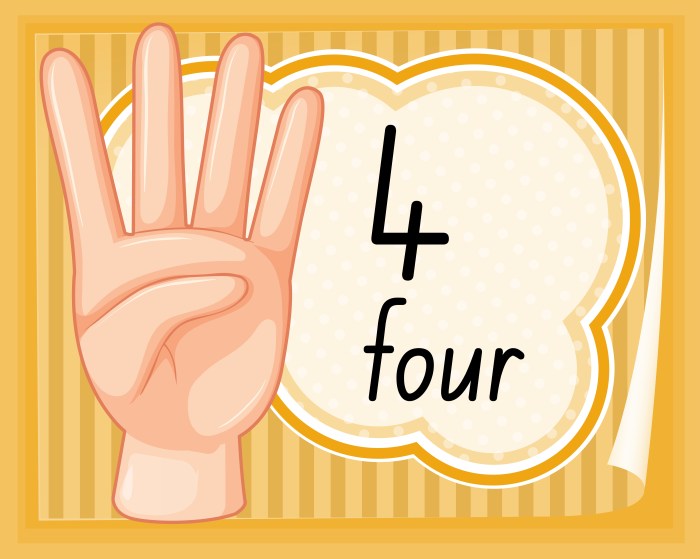10 facts about stretching you need know. Stretching is crucial for overall well-being, enhancing flexibility and range of motion. Proper stretching techniques prevent injuries and improve athletic performance, reducing muscle soreness and promoting recovery. This article dives deep into the science behind stretching, exploring different types, common mistakes, effective routines, and specialized techniques for various needs, all while emphasizing safety precautions.
Get ready to unlock the secrets to a more flexible, resilient, and healthier you!
Understanding the different types of stretches—static, dynamic, and more—is key to maximizing their benefits. A well-rounded approach to stretching, incorporating various techniques, is essential for optimal results. From beginner routines to advanced exercises, this comprehensive guide will empower you to create a personalized stretching regimen that meets your unique needs and goals. Discover the importance of listening to your body, avoiding overstretching, and incorporating warm-up and cool-down periods for a safe and effective stretching experience.
Introduction to Stretching
Stretching is a vital component of physical well-being, encompassing a range of techniques aimed at increasing flexibility, range of motion, and overall body awareness. It plays a crucial role in preventing injuries, improving posture, and enhancing athletic performance. Regular stretching routines contribute significantly to a healthier and more active lifestyle. Beyond physical benefits, stretching can also contribute to stress reduction and improved mental clarity.Stretching involves gently lengthening muscles and connective tissues, increasing their elasticity and reducing stiffness.
Proper stretching techniques are essential to maximize the benefits and minimize the risk of injury. Different types of stretches target specific muscle groups and achieve varying goals, and understanding these distinctions is crucial for tailoring a personalized stretching routine.
Benefits of Stretching
Stretching offers a multitude of benefits for overall health and well-being. It enhances blood flow to muscles, promoting better nutrient delivery and waste removal. Improved flexibility reduces the risk of muscle strains and tears, while also contributing to better posture and balance. Furthermore, regular stretching can help to alleviate chronic pain, particularly in the back and joints.
By increasing flexibility, stretching can also enhance athletic performance and reduce recovery time after exercise.
Types of Stretching
Understanding the different types of stretching is key to designing an effective routine. Each type targets specific aspects of flexibility and muscle function.
| Type of Stretch | Description |
|---|---|
| Static Stretching | Involves holding a stretch for a period of time, typically 20-30 seconds. This type of stretching lengthens muscles passively, improving flexibility and range of motion. Examples include holding a hamstring stretch or a quad stretch. |
| Dynamic Stretching | Involves controlled movements that gradually increase the range of motion of a joint. It prepares the muscles for activity by warming them up and increasing blood flow. Examples include arm circles, leg swings, and torso twists. |
| Proprioceptive Neuromuscular Facilitation (PNF) Stretching | This technique involves contracting and relaxing muscles to increase flexibility. It is often used by athletes to improve performance and recovery. An example of a PNF stretch is the contract-relax method, where a muscle is contracted, then relaxed, and then stretched further. |
| Ballistic Stretching | Involves bouncing or jerky movements to stretch muscles. This type of stretching is generally not recommended for most individuals, as it can increase the risk of injury. |
Importance of Proper Stretching Techniques
Proper stretching techniques are paramount to maximize the benefits and minimize the risk of injury. Using proper form ensures that the stretch is targeted to the correct muscle groups, minimizing the risk of pulling or straining muscles. Holding stretches for the appropriate duration is also critical for achieving optimal results. Always listen to your body and avoid pushing through pain; stretching should be comfortable and not cause discomfort.
Benefits of Stretching: 10 Facts About Stretching You Need Know
Stretching is a fundamental component of physical well-being, offering a multitude of advantages that extend far beyond just feeling good. It’s a crucial practice for maintaining and enhancing overall physical health, from improved flexibility to injury prevention and athletic performance. Understanding these benefits empowers you to integrate stretching into your routine and reap its numerous rewards.Stretching improves flexibility and range of motion by increasing the elasticity of muscles and connective tissues.
Regular stretching gradually lengthens these tissues, allowing for a greater range of movement around joints. This enhanced flexibility translates to a wider array of activities, from everyday tasks to more demanding physical pursuits. For example, someone who stretches regularly may find it easier to reach for objects on high shelves or perform complex movements during exercise without pain or discomfort.Stretching plays a pivotal role in injury prevention.
By maintaining flexibility and muscle elasticity, stretching reduces the risk of strains, sprains, and other musculoskeletal injuries. Tight muscles are more susceptible to tears or pulls, especially during sudden movements or high-intensity activities. Stretching helps prepare the body for these activities, reducing the likelihood of injury.Stretching can enhance athletic performance by improving muscle coordination, power, and speed.
Increased flexibility and range of motion allow for a greater amplitude of movement, which can improve athletic performance in various sports and activities. Consider a gymnast, whose flexibility is critical for executing complex routines. Improved flexibility enhances performance and minimizes the risk of injury.Stretching is directly correlated with reduced muscle soreness. By increasing blood flow and promoting muscle relaxation, stretching helps alleviate delayed-onset muscle soreness (DOMS).
This soreness often occurs after strenuous exercise, but stretching can lessen the intensity and duration of this discomfort.
Five Key Benefits of Stretching
Understanding the positive impact of stretching on your physical health can encourage you to incorporate it into your daily routine. The following five benefits highlight the advantages stretching offers.
- Improved Flexibility and Range of Motion: Stretching gradually lengthens muscles and connective tissues, increasing the range of motion around joints. This enhanced flexibility allows for a wider variety of movements, both in daily activities and during exercise.
- Injury Prevention: Maintaining muscle elasticity and flexibility through stretching reduces the risk of strains, sprains, and other musculoskeletal injuries. Tight muscles are more prone to tears or pulls, particularly during sudden movements or high-intensity activities.
- Enhanced Athletic Performance: Increased flexibility and range of motion improve muscle coordination, power, and speed. This can translate to better performance in various athletic endeavors.
- Reduced Muscle Soreness: Stretching increases blood flow and promotes muscle relaxation, thus helping alleviate delayed-onset muscle soreness (DOMS) after strenuous exercise.
- Improved Posture: Stretching can help improve posture by lengthening shortened muscles and increasing spinal flexibility. This can lead to reduced back pain and improved overall body alignment.
Benefits Summary Table
This table provides a concise overview of the benefits of stretching, including descriptions and practical examples.
| Benefit | Description | Example |
|---|---|---|
| Improved Flexibility and Range of Motion | Increased elasticity of muscles and connective tissues, leading to a wider range of movement. | Reaching for objects on high shelves, performing complex yoga poses. |
| Injury Prevention | Reduced risk of strains, sprains, and other musculoskeletal injuries. | Preparing for a run or workout with dynamic stretching. |
| Enhanced Athletic Performance | Improved muscle coordination, power, and speed due to increased flexibility. | A gymnast executing complex routines, a runner maintaining stride length. |
Common Stretching Mistakes

Stretching is a crucial component of a healthy lifestyle, but improper technique can negate its benefits and even lead to injuries. Understanding common stretching errors and their associated risks is essential for maximizing the positive impact of your stretching routine. Knowing how to avoid these mistakes will help you achieve your stretching goals safely and effectively.Common stretching mistakes frequently occur due to a lack of awareness or understanding of proper form.
These errors can lead to a variety of problems, from minor discomfort to significant injuries. Proper stretching techniques, on the other hand, promote flexibility, reduce muscle tension, and enhance overall well-being.
Common Errors in Stretching
Many people make mistakes in their stretching routines that undermine the intended benefits. These errors often stem from insufficient knowledge of proper technique and range of motion. Poor posture, inadequate warm-up, and holding stretches for insufficient or excessive durations are examples of common pitfalls. Understanding these mistakes and their consequences is critical for optimizing your stretching practice.
Common Stretching Mistakes and Solutions
Avoiding common mistakes is key to successful stretching. Here are five common errors and their corresponding solutions:
- Holding stretches too long: Prolonged holding can strain muscles and potentially lead to micro-tears. A suitable duration should be determined by your body’s response, focusing on achieving a comfortable stretch without pain. Instead of holding static stretches for extended periods, consider incorporating dynamic stretching techniques.
- Bouncing during stretches: Bouncing can overstretch muscles, leading to strains or tears. This forceful movement is detrimental to the flexibility gains you seek. Maintain a slow and controlled stretching motion, emphasizing gradual lengthening rather than jerky movements.
- Stretching cold muscles: Cold muscles are more susceptible to injury during stretching. A proper warm-up, such as light cardio or dynamic stretching, prepares muscles for the increased range of motion required during stretching. Begin with gentle movements before engaging in static stretches.
- Ignoring pain: Disregarding pain signals during stretching can lead to injury. If you feel sharp or intense pain, stop immediately. Listen to your body, and adjust your stretching routine accordingly. Modify the stretch to a less intense position, or rest.
- Not maintaining proper form: Maintaining a proper posture is critical during stretching. Incorrect form can compromise the effectiveness of the stretch and potentially lead to imbalances. Focus on maintaining a neutral spine and aligning your body correctly to avoid placing stress on joints or muscles.
Avoiding Common Stretching Mistakes
Avoiding common stretching mistakes is crucial for achieving optimal results and preventing injuries. By incorporating these techniques into your routine, you can maximize the benefits of stretching while minimizing the risks.
Ever wonder how to supercharge your stretching routine? Knowing the top 10 stretching facts is key, but sometimes you need tools to help you remember these important techniques. This is where the the lifehack big list 50 top productivity apps for iphone comes in handy; it’s packed with apps that can remind you to stretch at regular intervals and even track your progress, which can be really helpful for those who are new to stretching or want to maintain a consistent routine.
So, next time you want to learn more about those 10 stretching facts, don’t forget to check them out!
| Mistake | Solution |
|---|---|
| Holding stretches too long | Hold stretches for a comfortable duration, typically 15-30 seconds, focusing on a gradual lengthening of the muscle. |
| Bouncing during stretches | Avoid bouncing; maintain a slow and controlled stretching motion. |
| Stretching cold muscles | Warm up muscles with light cardio or dynamic stretching before static stretches. |
| Ignoring pain | Stop immediately if you feel sharp or intense pain. Modify the stretch or rest. |
| Not maintaining proper form | Focus on maintaining a neutral spine and proper alignment to avoid placing stress on joints or muscles. |
Stretching Techniques
Mastering stretching techniques is crucial for maximizing its benefits and minimizing the risk of injury. Proper form and controlled movements are key to achieving a safe and effective stretch. Understanding the different types of stretches and how to perform them correctly can significantly enhance your flexibility and overall well-being.
Common Stretching Exercises
A variety of stretching exercises target different muscle groups, promoting flexibility and range of motion. Learning these techniques allows you to tailor your stretching routine to address specific needs and goals. Consistency and correct execution are essential for optimal results.
- Static Stretching: This involves holding a stretch for a period of time, typically 20-30 seconds. Static stretches are generally considered safe and effective for improving flexibility and reducing muscle soreness. They’re best performed after a workout to cool down and lengthen muscles.
- Dynamic Stretching: This involves moving your body through a range of motion, gradually increasing the stretch. Dynamic stretches are often performed before a workout to prepare muscles for activity and increase blood flow. Examples include arm circles, leg swings, and torso twists.
- Proprioceptive Neuromuscular Facilitation (PNF) Stretching: PNF stretches involve contracting and relaxing muscles to improve flexibility. Contracting the targeted muscle group against resistance and then relaxing and stretching it further helps to enhance the range of motion. This method is often used by athletes to improve performance and reduce injury risk.
Proper Form and Execution
Correct form is paramount when performing any stretching exercise. Improper form can lead to injury and reduce the effectiveness of the stretch. Focus on maintaining a controlled and smooth movement throughout each stretch. Avoid bouncing or jerking, as this can put undue stress on the muscles and ligaments. Listen to your body and stop if you experience any pain.
Holding Stretches Correctly
Holding stretches correctly is essential for maximizing the benefits. Holding the stretch for the recommended duration (typically 20-30 seconds) allows the muscles to lengthen and improve flexibility. Breathing deeply and steadily throughout the stretch can also help to relax the muscles and improve the effectiveness of the stretch. It’s vital to maintain a comfortable and controlled position throughout the stretch.
Controlled Movements During Stretching
Controlled movements are crucial for safety and effectiveness during stretching. Avoid bouncing or jerky movements, as these can strain muscles and increase the risk of injury. Instead, focus on smooth, controlled stretches, allowing the muscles to lengthen gradually. A gradual approach prevents sudden stress and promotes relaxation within the muscle tissue. This ensures that the stretch is performed safely and effectively, allowing for optimal flexibility gains.
Table of Stretching Exercises
| Exercise Name | Description | Target Muscles | Duration (seconds) |
|---|---|---|---|
| Hamstring Stretch | Bend one knee and reach for your foot, keeping your back straight. | Hamstrings, lower back | 20-30 |
| Quadriceps Stretch | Grab your ankle and pull it towards your buttock, keeping your knee aligned with your hip. | Quadriceps | 20-30 |
| Triceps Stretch | Reach one arm overhead and bend your elbow. Use the opposite hand to gently pull on the extended arm. | Triceps | 20-30 |
| Chest Stretch | Interlock your hands behind you and push your arms straight back, keeping your back straight. | Pectorals | 20-30 |
Stretching Routines
Consistent stretching routines are crucial for maintaining flexibility, preventing injuries, and improving overall well-being. Properly designed routines cater to different fitness levels and goals, ensuring that everyone can reap the benefits of stretching. Tailoring a routine to your specific needs is key to experiencing the positive effects of stretching.
Beginner Stretching Routine
A beginner stretching routine should focus on fundamental stretches for all major muscle groups. This routine is designed to be performed daily and gradually increase flexibility over time.
- Warm-up (5 minutes): Start with light cardio, like brisk walking or jumping jacks, to increase blood flow to the muscles. This prepares the body for stretching and reduces the risk of injury.
- Upper Body (10 minutes):
- Shoulder rolls (forward and backward): 10 repetitions each direction.
- Arm circles (forward and backward): 10 repetitions each direction.
- Neck stretches (side to side, front to back): 5 repetitions each direction.
- Triceps stretch (one arm at a time): Hold for 20 seconds, repeat 2 times per arm.
- Chest stretch (using a wall or door frame): Hold for 20 seconds, repeat 2 times.
- Lower Body (10 minutes):
- Hamstring stretch (seated or standing): Hold for 20 seconds, repeat 2 times per leg.
- Quadriceps stretch (one leg at a time): Hold for 20 seconds, repeat 2 times per leg.
- Calf stretch (using a wall or chair): Hold for 20 seconds, repeat 2 times per leg.
- Butterfly stretch: Hold for 20 seconds, repeat 2 times.
- Hip flexor stretch (lying on one side): Hold for 20 seconds, repeat 2 times per leg.
- Cool-down (5 minutes): End with static stretches, holding each for 30 seconds. This helps the muscles gradually return to their resting state.
Advanced Stretching Routine
This routine builds upon the beginner routine by incorporating more challenging stretches and longer hold times. It’s suitable for individuals with a greater level of flexibility and fitness.
| Body Part | Exercise | Repetitions |
|---|---|---|
| Back | Thoracic spine rotation | 10 repetitions each direction |
| Shoulders | Cross-body shoulder stretch | 10 repetitions per side |
| Hamstrings | Standing hamstring stretch with reach | 5 repetitions per leg |
| Hips | Pigeon pose | 2 repetitions per side |
| Calves | Standing calf stretch with resistance band | 10 repetitions per leg |
10-Minute Stretching Routine
This sample routine demonstrates a focused 10-minute stretch session that can be incorporated into your daily routine. Prioritize proper form and listen to your body. If any stretch causes pain, stop immediately.
Warm-up (1 minute): Jumping jacks, high knees, butt kicks (30 seconds each)
Upper Body (2 minutes):
- Shoulder rolls (forward and backward): 10 repetitions each direction.
- Arm circles (forward and backward): 10 repetitions each direction.
Lower Body (3 minutes):
- Hamstring stretch (seated): 20 seconds per leg.
- Quadriceps stretch: 20 seconds per leg.
- Calf stretch: 20 seconds per leg.
Cool-down (4 minutes):
- Hold each stretch for 30 seconds: Repeat the upper and lower body stretches from the previous sections.
Stretching for Specific Needs
Targeting specific areas like back pain or tight hamstrings with tailored stretching techniques can significantly improve flexibility and alleviate discomfort. Understanding the nuances of different needs and adapting stretches to individual fitness levels is crucial for safe and effective results. This approach allows for personalized routines that address specific limitations and promote overall well-being.
Addressing Back Pain
Back pain can stem from various causes, including muscle imbalances, poor posture, or injuries. Specific stretches can help alleviate pain and improve spinal mobility. A gradual, controlled approach is essential to avoid exacerbating existing discomfort.
- Cat-Cow Pose: This gentle movement helps mobilize the spine, releasing tension in the back muscles. Start on your hands and knees, then inhale and arch your back like a cow, dropping your belly toward the floor. Exhale and round your spine, tucking your chin toward your chest like a cat. Repeat several times.
- Child’s Pose: This restorative pose gently stretches the lower back, hips, and thighs. Kneel on the floor, bring your big toes together, and sit back on your heels. Fold forward, resting your forehead on the mat, and extend your arms out in front of you or alongside your body. Hold for several breaths.
- Spinal Twist: This stretch targets the muscles around the spine, promoting flexibility and relieving pressure on the lower back. Sit with your legs extended, bend one knee and place the sole of your foot on the opposite knee. Gently twist your torso towards the bent knee, keeping your back straight. Hold for a few seconds, then repeat on the other side.
- Knee-to-Chest Stretch: This stretch relieves tension in the lower back and hamstrings. Lie on your back, gently pull one knee towards your chest, and hold for a few seconds. Repeat with the other knee. You can also hold both knees simultaneously for a deeper stretch.
Addressing Tight Hamstrings
Tight hamstrings are a common issue, often impacting flexibility and range of motion. Stretches targeting these muscles can alleviate discomfort and improve overall movement.
- Standing Hamstring Stretch: Place one leg behind you, and lean forward from your hips. Keep your back straight and feel the stretch in the back of your extended leg. Hold for 20-30 seconds. Modify by bending your front knee slightly for a less intense stretch.
- Seated Hamstring Stretch: Sit with one leg extended straight out in front of you. Reach for your toes, keeping your back straight. Hold for 20-30 seconds. If you can’t reach your toes, grab a towel or strap around the foot and gently pull. This is a modification for those with limited flexibility.
- Reclining Hamstring Stretch: Lie on your back with one leg extended in the air. Gently pull on the back of your thigh, keeping your knee straight. Hold for 20-30 seconds.
Modifications for Different Fitness Levels
Modifying stretches is essential for adapting to various fitness levels. Beginners should focus on holding stretches for shorter durations and gradually increase the duration as their flexibility improves. Individuals with pre-existing conditions should consult with a healthcare professional before starting a stretching routine.
Stretching Routines for Specific Needs
Tailored stretching routines can effectively address particular needs. Consult with a physical therapist or certified personal trainer for personalized routines that align with your specific goals and limitations.
Table of Stretching Techniques for Specific Needs
| Need | Stretching Techniques |
|---|---|
| Back Pain | Cat-Cow Pose, Child’s Pose, Spinal Twist, Knee-to-Chest Stretch |
| Tight Hamstrings | Standing Hamstring Stretch, Seated Hamstring Stretch, Reclining Hamstring Stretch |
Safety Precautions
Stretching can significantly improve flexibility and reduce muscle soreness, but it’s crucial to approach it with caution. Ignoring safety measures can lead to injuries, hindering your progress and potentially causing pain. Understanding the importance of proper technique and listening to your body is key to reaping the benefits of stretching safely and effectively.
Importance of Listening to Your Body
Your body provides valuable feedback during stretching. Pay close attention to any sharp pain, burning sensations, or discomfort. If you experience any of these, immediately stop the stretch. Pushing through pain can lead to injury. Respect your body’s limits and focus on stretching within a comfortable range of motion.
This mindful approach will prevent potential harm and allow your muscles to adapt safely.
Avoiding Overstretching
Overstretching, characterized by excessive force applied during a stretch, can lead to strains, tears, or other injuries. A gradual approach to stretching is essential. Start with a gentle range of motion and gradually increase the intensity as your body adapts. Focus on maintaining a comfortable tension rather than pushing beyond your limits. Rushing the process can be detrimental.
Consistency and controlled movements are vital for achieving long-term flexibility gains without risk.
Proper Warm-up Before Stretching
A thorough warm-up is essential before any stretching routine. Warm muscles are more pliable and less prone to injury. A warm-up can involve light cardio exercises, such as brisk walking or jogging, or dynamic stretches, which involve controlled movements that prepare your muscles for more intense stretching. This prepares your body for the increased demand on your muscles and joints.
Knowing the 10 facts about stretching is crucial for your well-being, but capturing those amazing stretches for later review is equally important. To enhance your photo-shooting experience, consider checking out these top 20 Android apps for photo shooting, editing, and sharing, like top 20 android apps for photo shooting editing and sharing. These apps will help you document your progress and inspire further exploration of stretching techniques.
Ultimately, remembering those 10 facts about stretching is key for continued improvement.
Cool-down After Stretching
Cooling down after stretching is equally important. It helps your muscles gradually return to their resting state, reducing the risk of delayed-onset muscle soreness (DOMS). Static stretches, held for 15-30 seconds, can be part of a cool-down routine. These stretches help maintain the increased flexibility gained during the session, preventing muscle stiffness.
Important Safety Tips for Stretching
Safe stretching practices are crucial for preventing injuries and maximizing benefits. Stretching should be performed regularly, but it’s not a one-time fix. Consistency is key to achieving long-term results.
- Use proper form: Correct posture and technique are essential. Improper form can lead to injury, and it negates the intended benefits of the stretch. Refer to trusted resources for proper techniques.
- Gradually increase intensity: Don’t try to achieve maximum flexibility in a single session. Start with a comfortable range of motion and gradually increase the intensity as your body adapts.
- Avoid bouncing: Bouncing during stretches can lead to muscle strains. Hold each stretch for a specified amount of time to avoid injuries.
- Stretch regularly: Consistent stretching is key to improving flexibility and preventing injury. Daily or frequent sessions are recommended for optimal results.
- Consult a healthcare professional: If you have any pre-existing medical conditions or injuries, consult a physical therapist or doctor before starting a stretching program. They can provide personalized guidance to ensure you stretch safely and effectively.
Advanced Stretching Techniques
Pushing beyond basic stretches unlocks deeper flexibility and improved range of motion. Advanced techniques often incorporate holding positions for longer durations, utilizing different angles, and employing external forces or assistance. Understanding these techniques can significantly enhance your stretching routine and address specific areas of tightness.
PNF Stretching
PNF, or proprioceptive neuromuscular facilitation, is a powerful method that uses muscle contractions to improve flexibility. It involves contracting and relaxing muscles to stimulate the nervous system and promote greater range of motion. This technique is particularly effective for targeting specific muscle groups and addressing limitations in flexibility.
- Contraction Phase: A controlled contraction of the target muscle is performed against resistance, usually your own hand or a partner’s. This activates the Golgi tendon organs, signaling the muscle to relax.
- Relaxation Phase: After the contraction, the muscle is passively stretched to a greater extent than would be possible with a static stretch alone. This allows the muscle to lengthen more effectively, leading to improved flexibility.
Ballistic Stretching
Ballistic stretching involves bouncing or jerky movements to increase the range of motion. While effective for some individuals, it carries a higher risk of injury, especially if not performed correctly. It’s best suited for those with a solid understanding of their body’s limitations and a history of successful stretching.
- Caution: Ballistic stretches should be performed with extreme caution, as they can lead to muscle tears or strains if done incorrectly. Always consult with a healthcare professional before attempting ballistic stretches.
- Proper Form: Controlled, rhythmic movements, not jerky or sudden movements, are essential. Beginners should avoid ballistic stretches altogether.
Static Stretching with Hold
This technique involves holding a static stretch for an extended period, typically 30 seconds or more. It is a common and safe method for improving flexibility, allowing muscles to lengthen gradually and safely. Consistency is key for optimal results.
- Time Considerations: Holding a stretch for a longer duration, beyond 30 seconds, can lead to a deeper stretch.
- Focus and Control: Focus on maintaining proper posture and control throughout the stretch. Pain should be minimal, and discomfort should not be ignored.
Table of Advanced Stretching Techniques
| Technique | Description | Benefits |
|---|---|---|
| PNF Stretching | Involves contracting and relaxing muscles to promote greater range of motion. | Increased flexibility, reduced muscle tension, improved athletic performance. |
| Ballistic Stretching | Involves bouncing or jerky movements to increase range of motion. | Potential for increased range of motion, but carries a higher risk of injury. |
| Static Stretching with Hold | Holding a static stretch for an extended period. | Improved flexibility, reduced muscle tension, enhanced joint mobility. |
15-Minute Advanced Stretching Routine Example
This routine focuses on major muscle groups and incorporates PNF techniques.
- Warm-up (5 minutes): Light cardio and dynamic stretches like arm circles, leg swings.
- PNF Hamstring Stretch (3 minutes): Contract hamstrings against resistance, then passively stretch. Repeat 3 times.
- Static Quad Stretch (3 minutes): Hold stretch for 30 seconds. Repeat 3 times.
- PNF Hip Flexor Stretch (3 minutes): Contract hip flexors, then passively stretch. Repeat 3 times.
- Cool-down (1 minute): Static stretches for all major muscle groups, held for 30 seconds each.
Stretching and Recovery
Post-workout recovery is crucial for maximizing gains and preventing injuries. Stretching plays a vital role in this process, aiding in muscle repair and reducing the risk of post-exercise soreness. Effective recovery strategies are essential for optimal performance and overall well-being. This section dives deep into the relationship between stretching and the body’s recovery mechanisms.
How Stretching Aids Muscle Recovery
Stretching after exercise promotes blood flow to the muscles, facilitating the removal of metabolic waste products like lactic acid. This increased circulation delivers oxygen and nutrients essential for muscle repair and rebuilding. Proper stretching also helps to reduce muscle tension and stiffness, promoting relaxation and recovery.
Benefits of Stretching for Reducing Muscle Stiffness, 10 facts about stretching you need know
Muscle stiffness, often a consequence of exercise, can hinder mobility and contribute to delayed-onset muscle soreness (DOMS). Stretching helps alleviate this stiffness by lengthening the muscles and increasing flexibility. This improved flexibility allows for a wider range of motion, reducing discomfort and promoting a smoother recovery process.
Stretching and Post-Workout Recovery
Stretching is an integral part of a comprehensive post-workout recovery routine. It complements other recovery methods like rest, hydration, and nutrition by actively targeting the muscles used during exercise. This targeted approach helps to restore the muscles to their pre-exercise state, preparing them for future workouts.
Role of Stretching in Preventing Delayed-Onset Muscle Soreness (DOMS)
Delayed-onset muscle soreness (DOMS) is a common experience after intense exercise. Stretching can help mitigate the severity and duration of DOMS by promoting blood flow and reducing inflammation in the affected muscles. By increasing flexibility, stretching helps prevent muscle tears and strains, thus minimizing the potential for DOMS.
Ever wonder about the 10 facts about stretching you need to know? Well, beyond the obvious benefits of improved flexibility, a crucial aspect of maintaining a healthy lifestyle is ensuring your home’s heating system is operating efficiently. Choosing a cost-effective ducted heating system service for your home here can save you money and energy, just like proper stretching can improve your overall physical well-being.
So, back to those 10 stretching facts – they’re vital for preventing injuries and promoting long-term health.
Post-Workout Stretching Routine
A post-workout stretching routine should focus on the major muscle groups worked during exercise. It should be performed gently and slowly, avoiding bouncing or forceful movements. Holding each stretch for 15-30 seconds is generally recommended.
- Warm-up: Begin with light cardio to increase blood flow to the muscles.
- Targeted Stretches: Focus on stretches for the quadriceps, hamstrings, calves, chest, back, shoulders, and triceps. Hold each stretch for 20-30 seconds, focusing on deep, controlled breathing.
- Cool-down: Finish with gentle stretches, holding each for 30 seconds. This helps the body transition from exercise to rest.
“Stretching after exercise is not just a good practice, it’s an essential component of a complete recovery strategy. It helps your body repair and rebuild muscles, reducing soreness and improving flexibility.”
Conclusion

Embarking on a stretching journey can transform your physical well-being and overall lifestyle. This comprehensive guide has equipped you with the knowledge and tools to integrate stretching effectively into your daily routine. From understanding the fundamental benefits to mastering various techniques and routines, this exploration has provided a holistic approach to this essential practice.
Key Takeaways
This article highlighted the importance of stretching for a multitude of reasons, including improved flexibility, reduced risk of injury, enhanced athletic performance, and stress relief. Understanding the various types of stretches, and how to perform them correctly, is crucial for maximizing the benefits and avoiding potential harm. This article also emphasizes the significance of listening to your body and tailoring your routine to your individual needs and limitations.
Call to Action
Now that you’ve gained a deeper understanding of stretching, it’s time to incorporate it into your daily life. Start with a few simple stretches each day, gradually increasing the duration and intensity as you progress. Consistency is key; aim for regular sessions, even if they are short. Remember to focus on proper form and listen to your body.
This commitment will lead to significant improvements in your physical health and well-being.
Additional Resources
For further exploration into the world of stretching, consider exploring reputable online resources such as the American College of Sports Medicine (ACSM) website or certified fitness professionals. Many fitness apps offer guided stretching routines tailored to different needs. Furthermore, consulting with a physical therapist or doctor can be invaluable for individuals with specific health conditions or injuries.
Summary of Main Points
| Topic | Key Point |
|---|---|
| Introduction to Stretching | Stretching is a crucial component of physical health and well-being. |
| Benefits of Stretching | Stretching improves flexibility, reduces injury risk, enhances athletic performance, and promotes stress relief. |
| Common Stretching Mistakes | Improper form and pushing beyond pain limits can hinder progress and lead to injury. |
| Stretching Techniques | Various stretching techniques exist, each with specific benefits and considerations for proper execution. |
| Stretching Routines | Regular stretching routines should be tailored to individual needs and goals. |
| Stretching for Specific Needs | Adjusting routines for different age groups, physical conditions, or athletic goals ensures optimal benefits. |
| Safety Precautions | Proper form, gradual progression, and listening to your body are crucial for injury prevention. |
| Advanced Stretching Techniques | Advanced techniques require expertise and proper guidance to avoid injury. |
| Stretching and Recovery | Stretching aids in muscle recovery after exercise, preventing stiffness and promoting overall health. |
| 10 Facts about Stretching | The article presented 10 key facts about stretching to highlight its importance. |
Conclusion
In conclusion, incorporating regular stretching into your daily routine offers a plethora of benefits for your physical and mental well-being. By understanding the different types of stretches, avoiding common mistakes, and following safe practices, you can unlock improved flexibility, injury prevention, and enhanced athletic performance. Remember to listen to your body, and tailor your routine to your specific needs.
This guide provided the essential knowledge to empower you to prioritize stretching and unlock your body’s full potential. Embrace the power of stretching and experience the positive impact it can have on your overall health and wellness.







